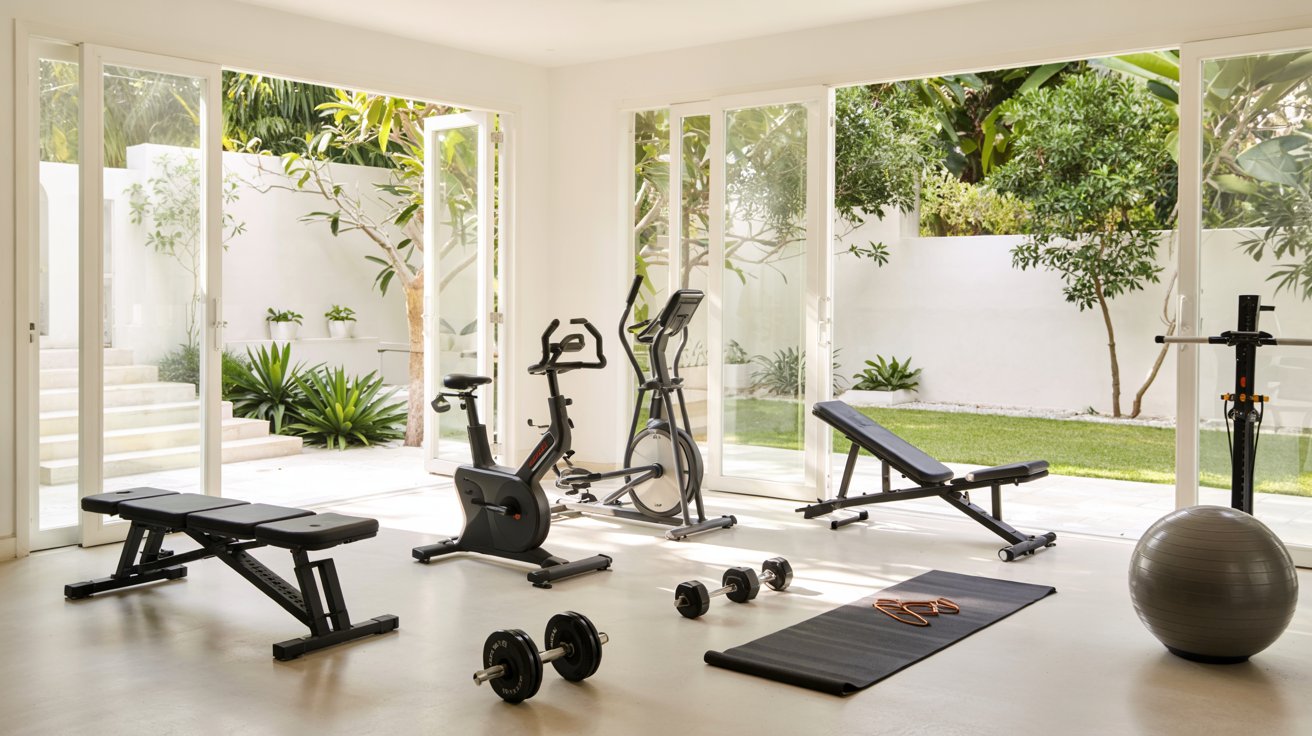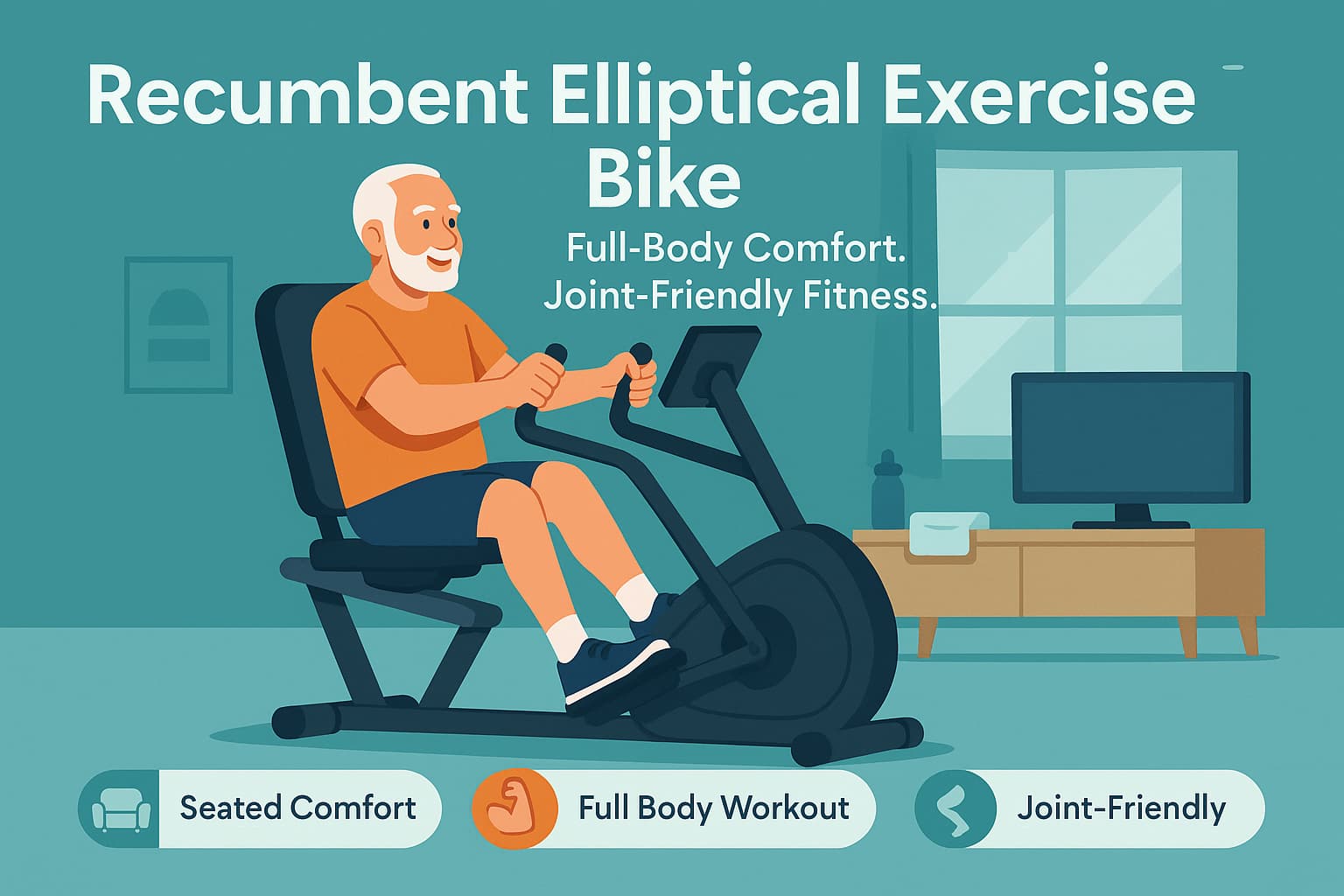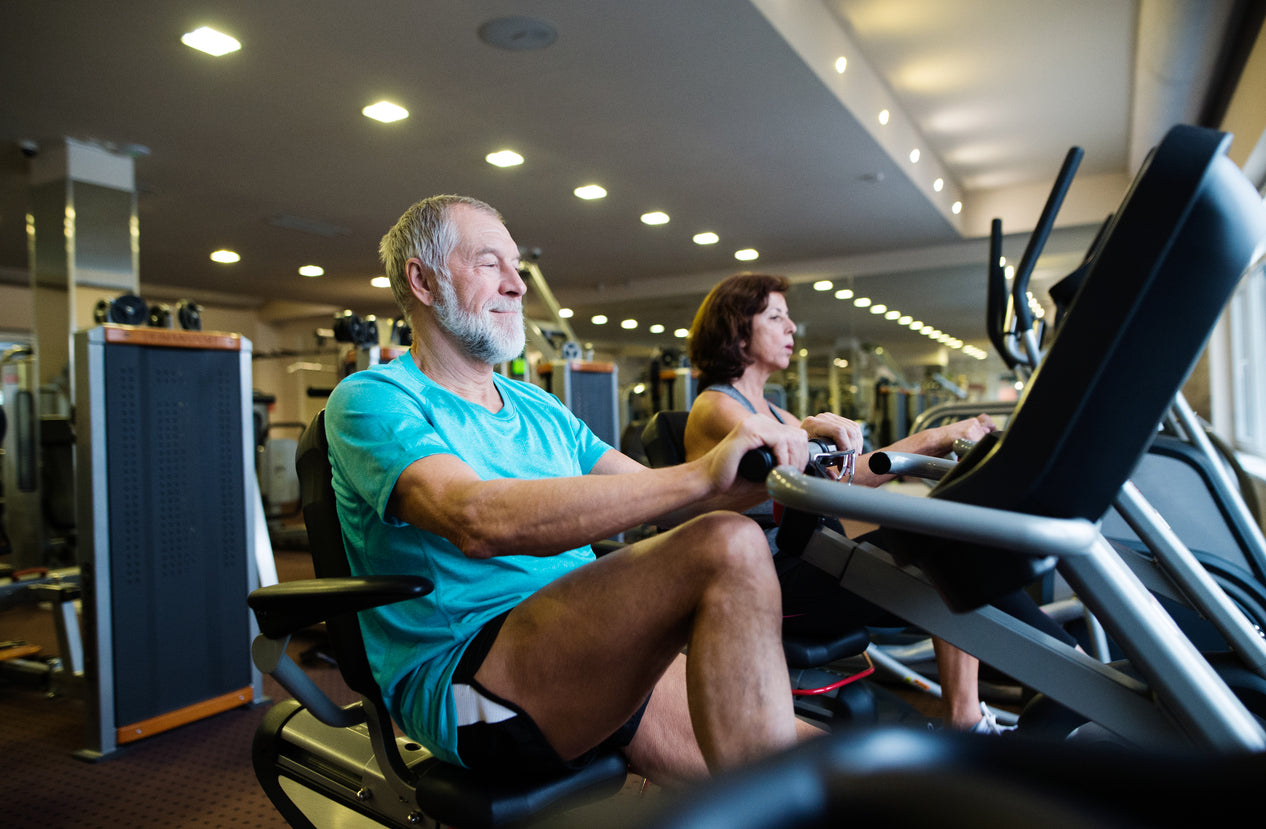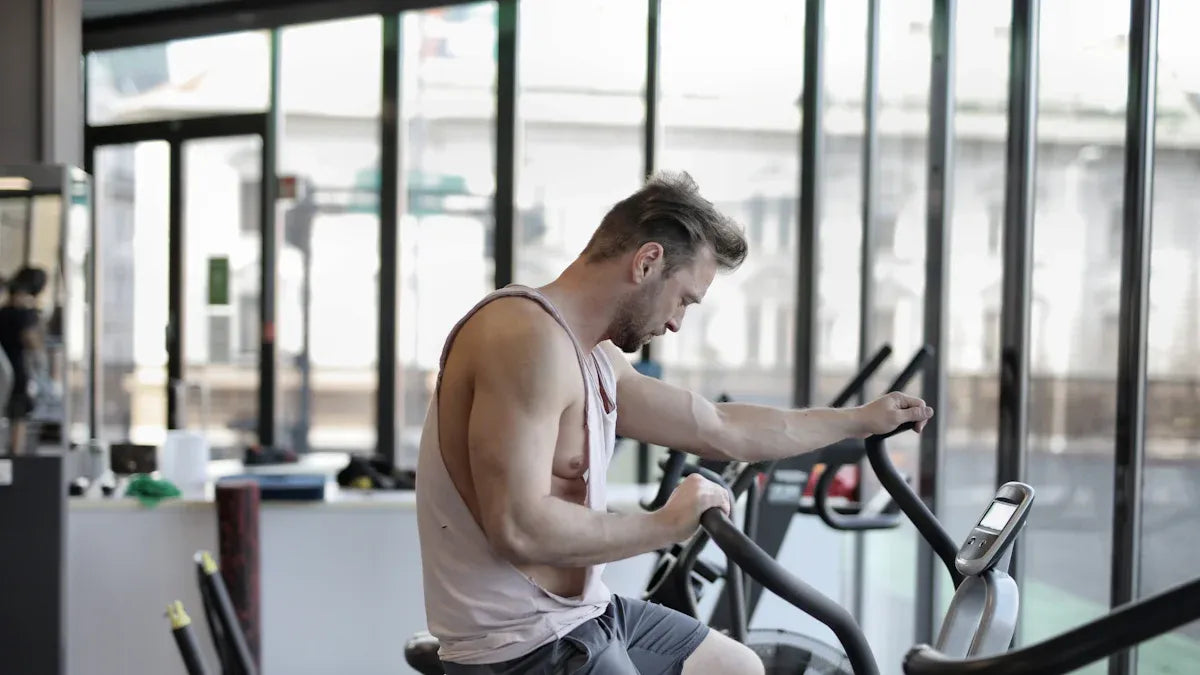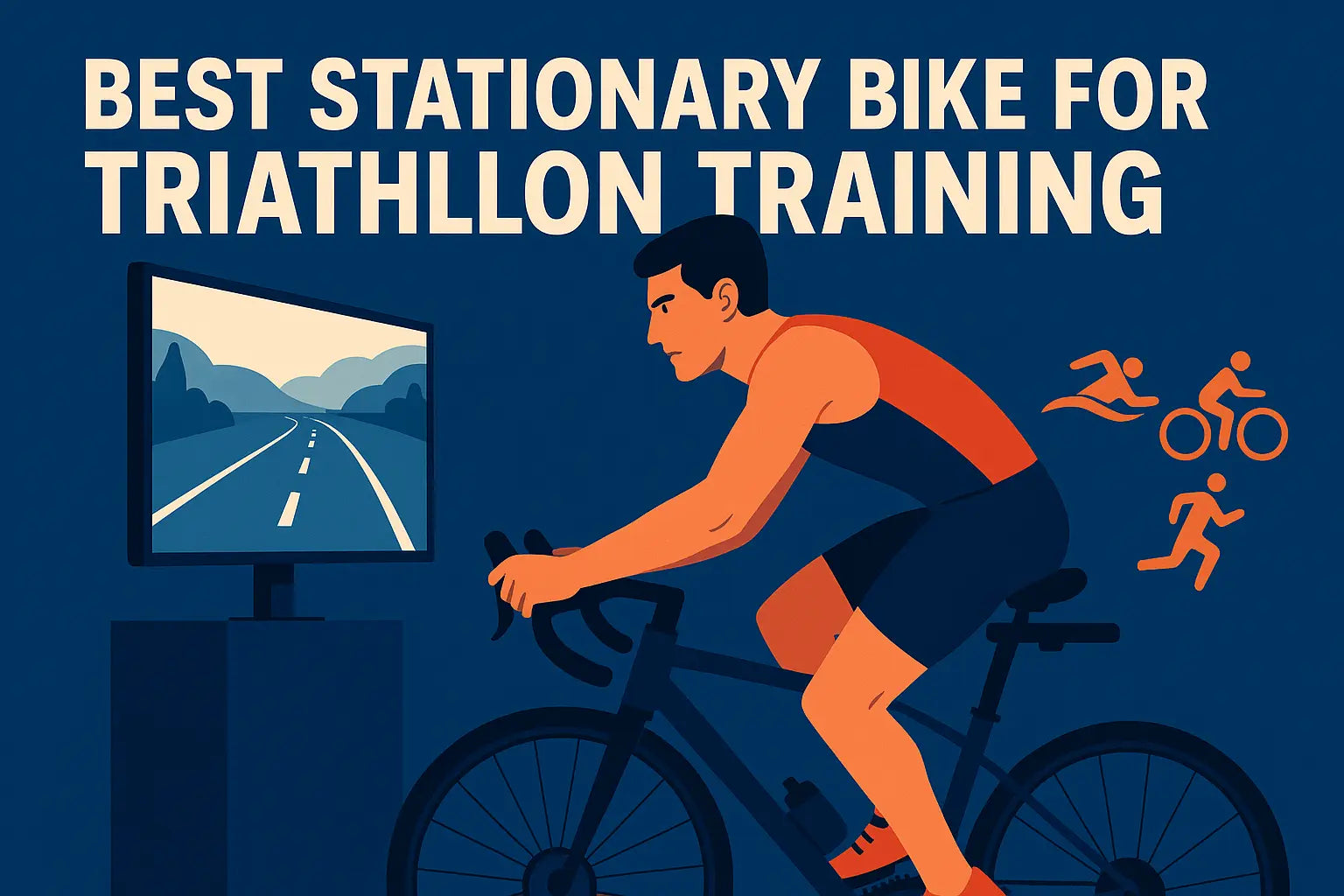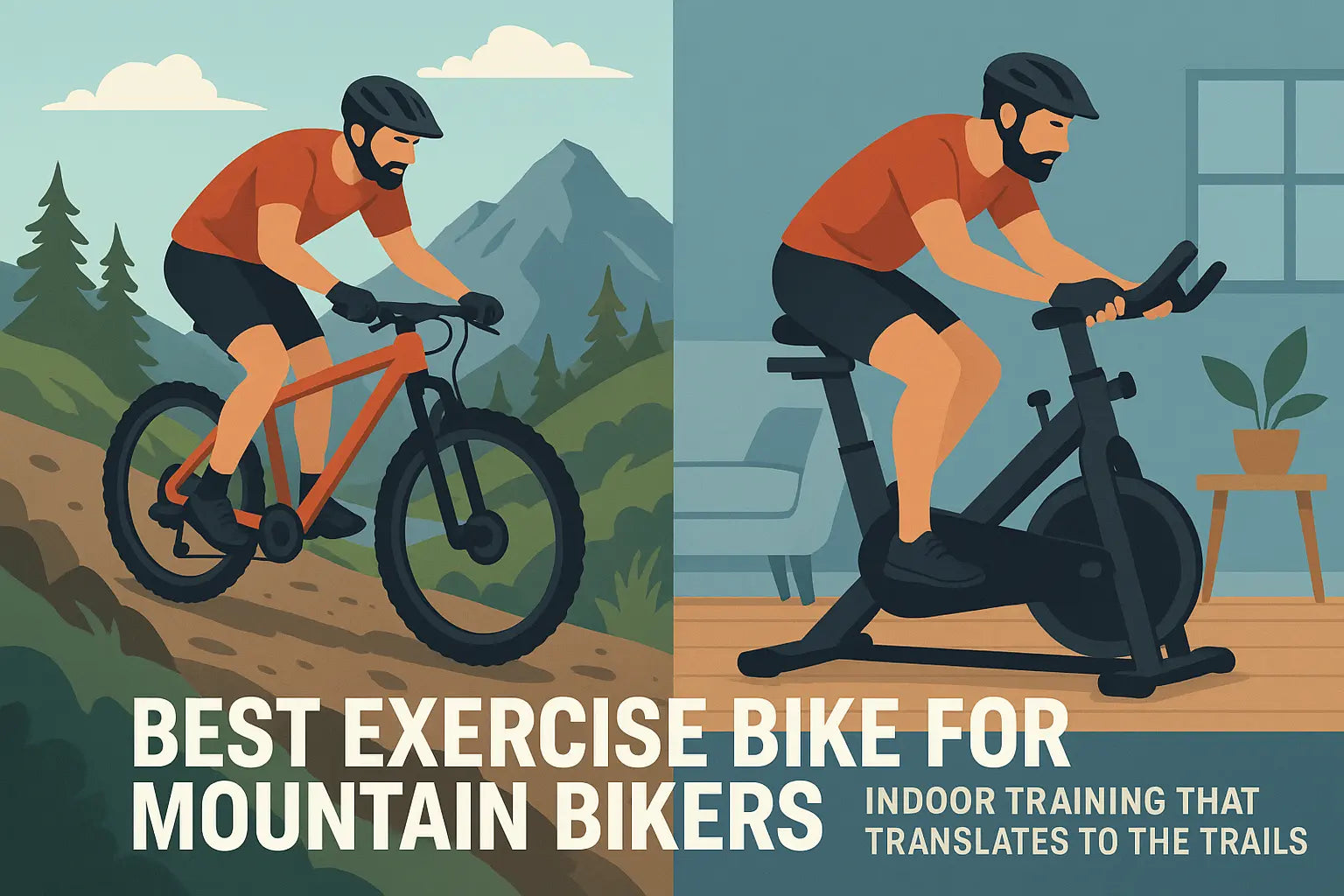You want to get fit, but choosing the right cardio machine can feel tricky. If you hope to lose weight fast, treadmills usually burn more calories. If you care about joint health, recumbent bikes offer a gentle ride. Each machine brings unique benefits. Your best pick depends on what your body needs and what you enjoy. Here’s a quick look at Recumbent Bike vs Treadmill to help you find your perfect match:
-
Treadmills challenge your stamina and burn calories.
-
Recumbent bikes protect your joints and keep workouts comfy.
Key Takeaways
-
Choose a recumbent bike for a low-impact workout that protects your joints and offers comfort during exercise.
-
Opt for a treadmill if you want to burn more calories quickly and engage your whole body during workouts.
-
Consider your fitness goals and personal preferences when selecting a machine; enjoyment leads to consistency in workouts.
-
Recumbent bikes are ideal for beginners and those with injuries, while treadmills suit advanced users seeking intensity.
-
Always prioritize safety by using proper form and starting slow, regardless of the machine you choose.
Recumbent Bike vs Treadmill Overview
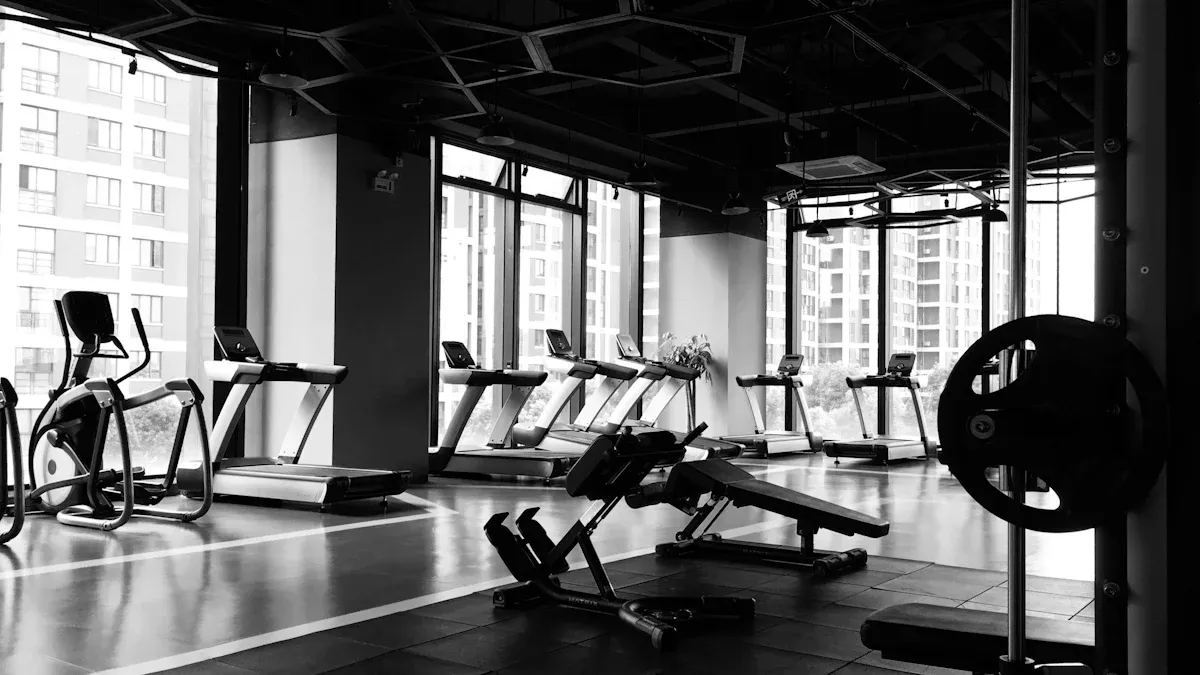
What Is a Recumbent Bike?
A recumbent bike is a type of exercise bike that lets you sit back in a comfortable seat with a backrest. Your legs stretch out in front of you as you pedal. You get support for your lower back, which makes this bike a favorite for people who want a gentle workout. You can watch TV, read, or just relax while you ride. Many people choose recumbent bikes because they feel safe and easy to use.
What Is a Treadmill?
A treadmill is a machine that lets you walk, jog, or run indoors. You step onto a moving belt and set your speed. You can adjust the incline to make your workout harder or easier. Treadmills help you train for races, burn calories, or just get your steps in when the weather is bad. You control how fast you go, so you can take it easy or push yourself.
Key Differences
When you look at Recumbent Bike vs Treadmill, you notice some big differences:
-
Body Position: On a recumbent bike, you sit back and pedal. On a treadmill, you stand up and move your legs to walk or run.
-
Impact on Joints: Recumbent bikes give you a low-impact workout. Treadmills can be harder on your knees and ankles, especially if you run.
-
Muscle Use: Recumbent bikes focus on your legs and glutes. Treadmills work your whole body, especially your legs and core.
-
Comfort: Many people find recumbent bikes more comfortable for long workouts. Treadmills can feel tough if you have joint pain.
Tip: If you want a workout that feels gentle and safe, a recumbent bike might be your best friend. If you love walking or running, a treadmill could be the way to go.
Recumbent Bike vs Treadmill comes down to what feels right for you and what fits your fitness goals.
Pros and Cons
Recumbent Bike Pros
-
You get a gentle workout that feels easy on your knees and hips.
-
The seat supports your back, so you stay comfortable, even during long rides.
-
Recumbent bikes help you build aerobic capacity and improve your heart health.
-
You can pedal while watching TV or reading, making exercise feel less like a chore.
-
Doctors often recommend recumbent bikes for people with joint pain or injuries because the movement is non-weight bearing.
-
Studies show these bikes boost cardiovascular fitness and lower blood pressure.
-
You lower your risk of heart disease and improve your cholesterol levels.
-
Beginners and seniors find recumbent bikes easy to use and less intimidating than other machines.
Tip: If you want a safe way to start cardio, a recumbent bike gives you comfort and confidence.
|
Benefit |
Why It Matters |
|---|---|
|
Aerobic capacity |
You strengthen your heart and lungs with regular cycling. |
|
Cardiovascular fitness |
Sprints and steady rides both help your heart work better. |
|
Joint-friendliness |
You avoid stress on bones and joints, making it ideal for injury recovery. |
Recumbent Bike Cons
-
You burn fewer calories compared to running or walking on a treadmill.
-
The workout mainly targets your legs, so your upper body gets less exercise.
-
Some people find the seated position less exciting or challenging.
-
If you want to train for walking or running events, a recumbent bike may not prepare you as well.
-
The machine can take up more space than an upright bike.
Treadmill Pros
-
You burn more calories, especially when you run or use an incline.
-
Treadmills let you walk, jog, or sprint, so you can change your workout anytime.
-
You work your legs, glutes, and core muscles with every step.
-
Treadmills help you train for races or improve your walking and running skills.
-
Research shows treadmills boost cardiovascular endurance and help lower body fat.
-
You can do high-intensity interval training (HIIT) for quick results.
-
Regular treadmill workouts improve cholesterol and make you feel more energetic.
Note: Treadmills offer lots of options for speed and incline, so you can tailor your workout to your goals.
Treadmill Cons
-
Running or walking on a treadmill puts more stress on your knees and ankles.
-
Beginners may feel nervous about falling, especially at higher speeds.
-
Treadmills can cause strains, sprains, or even fractures if you use them incorrectly.
-
People aged 30-49 have a higher risk of treadmill-related injuries.
-
Machines without good shock absorption can make joint pain worse.
-
You need to start slow and build up your intensity to avoid overexertion.
-
Treadmills can be noisy and take up a lot of space in your home.
Safety Tip: Always use the safety features and pay attention to your form to prevent injuries.
Recumbent Bike vs Treadmill comes down to what you want from your workout. If you need comfort and joint protection, the recumbent bike is a smart choice. If you want to burn more calories and challenge your whole body, the treadmill might suit you better.
Calorie Burn
Which Burns More?
When you want to know which machine burns more calories, the answer is clear. Treadmills usually help you burn more calories than recumbent bikes. Here’s a quick look at how many calories you can expect to burn in 30 minutes if you weigh about 155 pounds:
-
Running on a treadmill: about 350 calories
-
Using a recumbent bike: around 260 calories
That’s a difference of about 90 calories in favor of the treadmill. If you want to burn the most calories in the shortest time, the treadmill wins this round.
Tip: If you like to see fast results, try adding some incline or speed to your treadmill workout. You’ll boost your calorie burn even more!
Weight Loss Potential
You might wonder why treadmills burn more calories. The answer comes down to how your body works during each exercise. When you use a recumbent bike, you sit back and pedal. This position helps your blood flow back to your heart more easily. Your heart does not have to work as hard, so your heart rate stays lower. You burn fewer calories because your body uses less energy.
On a treadmill, you stand up and move your whole body. Your heart has to pump blood against gravity. This makes your heart beat faster and your body work harder. You burn more calories because your body uses more energy.
If your main goal is weight loss, the treadmill gives you a bigger calorie burn. But don’t forget, you need to pick the machine you enjoy most. You will stick with your workouts longer if you like what you’re doing. Recumbent Bike vs Treadmill is not just about numbers. It’s about finding what fits your life and keeps you moving.
Muscle Engagement
Recumbent Bike Muscles
When you hop on a recumbent bike, your legs do most of the work. You sit back and push the pedals forward. This position feels comfortable, but your muscles still get a good workout. You mainly use your quadriceps, hamstrings, glutes, and calves. These muscles help you pedal and keep your legs moving smoothly.
EMG studies show that two muscles stand out during recumbent bike workouts:
-
The semitendinosus, which sits in the back of your thigh, gets activated as you pedal.
-
The tibialis anterior, found in your shin, also works hard to keep your foot steady.
You might wonder if recumbent bikes work your muscles differently than upright bikes. Research says the rectus femoris muscle, located in the front of your thigh, works harder when you pedal upright. However, scientists found no big differences in overall muscle activity between recumbent and upright cycling.
Tip: If you want to strengthen your legs without stressing your joints, a recumbent bike gives you a safe way to build muscle.
Treadmill Muscles
Walking or running on a treadmill feels different from cycling. You stand tall and move your whole body. Your legs, glutes, and calves power each step. Your core muscles help you stay balanced. Your arms swing to keep your rhythm and posture.
Here’s what happens when you use a treadmill:
-
Your lower body muscles work hard with every stride.
-
Your core and upper body muscles activate to help you balance and keep good posture.
-
Treadmill running uses more stretch-shortening activity, which means your muscles contract and release quickly.
-
You use more type II muscle fibers, which help with fast, powerful movements.
Cycling on a recumbent bike mostly targets your lower body. Treadmill workouts engage your whole body, especially your core and upper body. If you want a workout that builds strength from head to toe, the treadmill gives you more muscle engagement.
Note: You can boost your muscle activation by changing the treadmill’s speed or incline. Try mixing up your routine to challenge different muscles!
Joint Impact
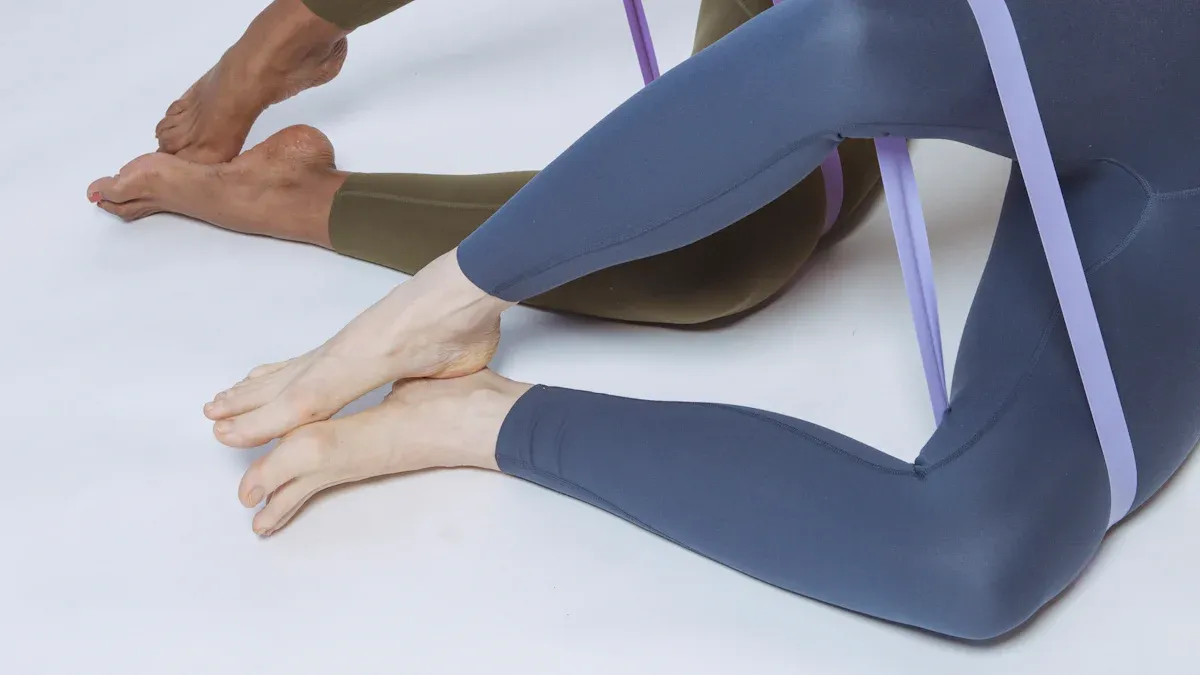
Low-Impact Benefits
You might worry about hurting your joints when you exercise. That’s a smart thing to think about. Recumbent bikes give you a low-impact workout. Your feet stay on the pedals, and your body sits back in a comfy seat. You avoid pounding your knees, hips, and ankles. This makes recumbent bikes a top choice if you have arthritis or past injuries.
Treadmills can feel tougher on your joints. When you walk or run, your feet hit the belt again and again. Your knees and hips take more force. If you run fast or use a steep incline, you might feel even more stress. Some treadmills have shock absorption, but you still get more impact than with a bike.
If you want to protect your joints, a recumbent bike helps you move without pain. You can exercise longer and feel good after your workout.
Here’s a quick look at why recumbent bikes feel easier on your body:
-
Your weight stays supported by the seat.
-
Your legs move in a smooth, circular motion.
-
You avoid sudden stops or jolts.
Injury Risk
Every machine has some risk. You need to know what can happen so you stay safe. Sports medicine research shows that treadmills and recumbent bikes can cause different injuries. Treadmills often lead to joint pain or muscle strains, especially if you push too hard or use poor form.
Check out this table to see common injuries:
|
Injury Type |
Possible Causes |
|---|---|
|
Hip Pain |
muscle strain, tendonitis, IT band syndrome, muscle tendon bursitis, osteoarthritis, fractures, labral tear, impingement, overuse |
|
Knee Pain |
patellofemoral pain syndrome (PFPS), IT band syndrome, torn meniscus, osteoarthritis, torn knee ligament (ACL, MCL, PCL, LCL) |
|
Ankle Pain |
N/A |
You can lower your risk by starting slow and listening to your body. If you feel pain, stop and rest. Always use good posture. Recumbent bikes rarely cause serious injuries, but you might feel muscle soreness if you pedal too hard. Treadmills need extra caution, especially if you run fast or lose focus.
Safety tip: Warm up before you start. Stretch your legs and hips. Stay alert, and use the safety features on your machine. Your joints will thank you!
Suitability
Beginners and Seniors
You might wonder which machine feels safer when you start your fitness journey. Recumbent bikes give you a gentle ride. The seat supports your back, and your feet stay planted on the pedals. You avoid sudden movements. You feel less worried about falling. Many seniors and beginners pick recumbent bikes because they protect your joints and help you build strength without pain.
Treadmills offer a different experience. You walk or run on a moving belt. This helps your bones stay strong because you put weight on your legs. You improve your balance and bone density. If you set the speed too high, you might feel nervous or lose your balance. Treadmills can be tough on your knees and hips, especially if you have joint pain.
Here’s a quick comparison:
-
Recumbent Bikes: Low-impact, safer for joints, lower risk of falls, good for heart health and muscle strength.
-
Treadmills: Weight-bearing, boosts bone density, higher fall risk if speed is too fast, can stress joints.
Tip: If you want a safe start, try a recumbent bike. You can always switch to a treadmill when you feel stronger.
Users with Injuries
If you deal with injuries, you need a machine that feels gentle. Recumbent bikes let you exercise without putting pressure on sore knees or hips. You sit back and pedal in a smooth motion. You avoid jolts and sudden stops. Doctors often recommend recumbent bikes for people recovering from surgery or injury.
Treadmills can help you regain strength, but you must watch your speed. Walking feels easier than running. If you have joint pain, keep the incline low. Always listen to your body. Stop if you feel pain.
Safety tip: Start slow and use the handrails if you need extra support.
Advanced Users
You want a challenge. Treadmills let you sprint, climb hills, and push your limits. You burn more calories and work your whole body. You can try interval training or long runs. If you love competition, treadmills help you train for races.
Recumbent bikes offer resistance settings. You can pedal faster or increase the load. You build endurance and leg strength. If you want a tough workout without joint pain, recumbent bikes deliver.
|
User Type |
Best Machine |
Why It Works |
|---|---|---|
|
Beginners/Seniors |
Recumbent Bike |
Safe, comfy, easy on joints |
|
Injured Users |
Recumbent Bike |
Gentle, supports recovery |
|
Advanced Users |
Treadmill |
High intensity, full-body workout |
Note: Pick the machine that matches your needs. You’ll enjoy your workouts and see better results.
Practical Factors
Space Needs
You want to make sure your cardio machine fits in your home. Recumbent bikes and treadmills need different amounts of space. Here’s what you should know:
-
Treadmills need at least 3 feet in width.
-
You should allow 6 feet in length for the treadmill.
-
The height should be 4 to 5 feet.
-
You need an extra 5 feet of open space behind the treadmill for safety.
Recumbent bikes usually take up less room. You can place them in a corner or next to a wall. If you live in a small apartment, a recumbent bike might be easier to fit. Treadmills need more open space, especially behind the machine. Always measure your room before you buy.
Tip: Grab a tape measure and check your space before you decide. You don’t want your new machine to block your doorway!
Cost
You probably want to know how much these machines cost. Recumbent bikes often cost less than treadmills. You can find basic recumbent bikes for a few hundred dollars. High-end models cost more, but they still stay below the price of many treadmills.
Treadmills come in many styles. Some cost as little as $400, while others go over $2,000. The price depends on features like speed, incline, and built-in programs. You should also think about repair costs. Treadmill repairs can range from $195 to $500 for home models. Commercial treadmills cost even more to fix.
Maintenance
You want your machine to last. Regular maintenance keeps your recumbent bike running smoothly. If you skip maintenance, you might pay more for repairs later. Treadmills also need care. You should clean the belt, check the motor, and tighten bolts. If you ignore these steps, you could face expensive repairs. Some treadmill repairs cost up to $500, depending on the brand and model.
Note: Take care of your machine, and it will take care of you. Clean it often and follow the instructions in your manual. This helps you avoid big repair bills and keeps your workouts safe.
Choosing Based on Goals
Weight Loss
If you want to lose weight, you probably want to burn as many calories as possible. Treadmills usually help you burn more calories in less time because you use more muscles and stand up while moving. Running or walking fast on a treadmill can really get your heart pumping and help you shed pounds.
But a recumbent bike can also help you lose weight, especially if you have joint pain or need a gentler workout. Here’s why a recumbent bike might be the better choice for some people:
-
You get a low-impact workout, so your knees and hips feel less stress.
-
You use large muscles in your legs, which helps your heart and burns calories.
-
The comfy seat lets you exercise longer, so you can burn more calories over time.
If you have trouble standing for long periods or worry about falling, a recumbent bike lets you work out safely. You can ride for a longer time, which adds up to more calories burned. For many people, the best machine is the one you can use often and enjoy.
Tip: If you want fast results, try to increase your workout time or add intervals to your routine.
Joint Health
Protecting your joints matters, especially if you have arthritis or past injuries. Recumbent bikes shine in this area. You sit back, your weight stays supported, and your legs move in a smooth circle. This means less pounding on your knees and hips.
Recent studies compared how recumbent bikes and treadmills affect knee health. Here’s what researchers found:
-
People who used treadmills lost some knee cartilage after 12 weeks of training.
-
People who used recumbent bikes kept their knee cartilage healthy.
If you want to keep your joints safe, a recumbent bike is a smart pick. You can exercise without worrying about pain or long-term damage.
Note: Always listen to your body. If you feel pain, slow down or take a break.
Endurance
Building endurance means you can exercise longer and feel less tired. Treadmills help you here because you use more muscles and stand up while moving. Walking or running on a treadmill makes your heart and lungs work harder. You also build stronger bones because you put weight on your legs.
Recumbent bikes help you build endurance too, but in a different way. You can ride for a long time without hurting your joints. This is great if you want to stay active but need a gentle workout. You may not use as many muscles as you do on a treadmill, but you still get your heart rate up and improve your fitness.
If you want to boost your endurance and don’t have joint problems, a treadmill gives you a bigger challenge. If you need a low-impact option, a recumbent bike lets you go the distance without pain.
Preferences
Your personal preference matters most. You will stick with your workouts if you enjoy them. Some people love the feeling of running or walking on a treadmill. Others like the comfort and safety of a recumbent bike.
Let’s look at what people choose:
|
Equipment Type |
Preference Percentage |
|---|---|
|
Air bike/rower |
48.2% |
|
Treadmills |
23.3% |
|
Stationary bikes |
17.1% |
|
Stair steppers |
11.4% |
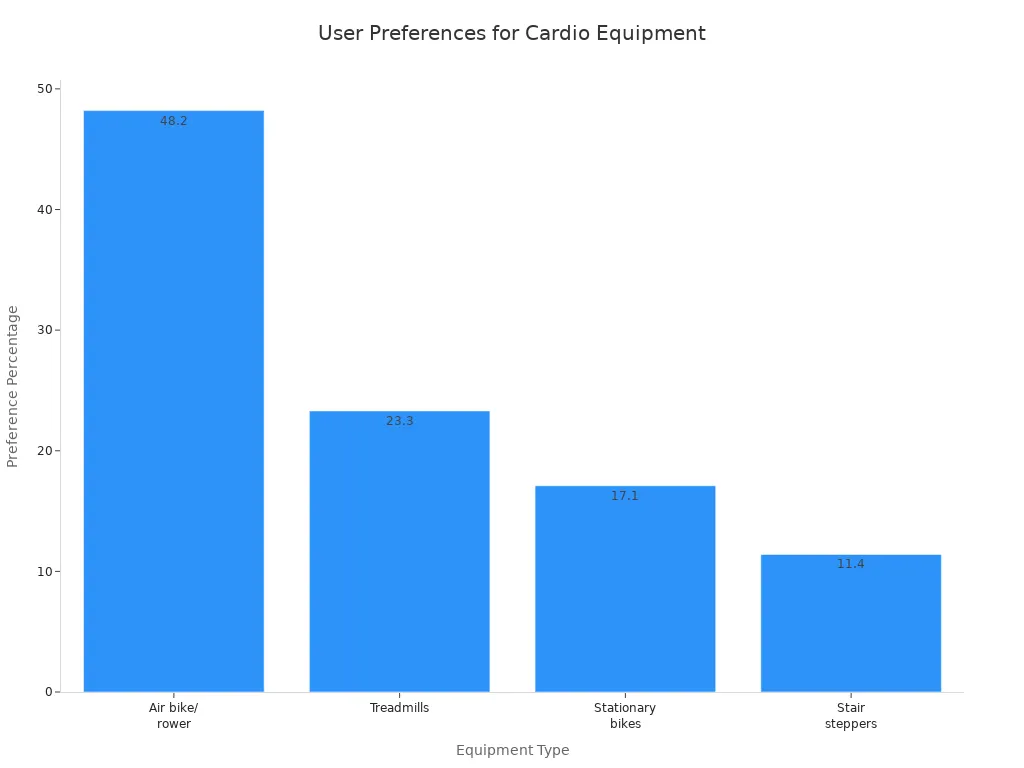
Interest in recumbent bikes keeps growing. More people choose them because they feel comfortable and easy to use, especially older adults. The market for recumbent bikes is expected to grow a lot in the next ten years.
Remember: The best machine is the one you enjoy and will use often. Try both if you can. See which one feels right for you.
When you compare Recumbent Bike vs Treadmill, think about your goals, your health, and what makes you happy. Your perfect cardio machine is the one that fits your life.
Choosing between a recumbent bike and a treadmill depends on what you want and need. You should think about:
-
How intense you like your workouts
-
Joint health and comfort
Recumbent bikes fit small spaces and cost less, while treadmills offer more intensity but need extra room. If you treat your equipment like a workout buddy, you’ll feel more confident and motivated.
|
Motivation Tip |
How It Helps |
|---|---|
|
Cheerleader Effect |
Boosts your confidence and drive |
|
Teamwork Redefined |
You’ve got this—pick the machine that feels right and enjoy every step or pedal! 🚴♂️🏃♀️
FAQ
Can you lose belly fat with a recumbent bike or treadmill?
You can lose belly fat with both machines. You need to burn calories and stay active. Pair your workouts with healthy eating. Over time, you will see results.
Tip: Try interval training for faster fat loss!
Which machine is safer for people with arthritis?
Recumbent bikes feel safer for arthritis. You get support for your back and joints. The smooth motion helps you avoid pain. Treadmills may cause more stress on knees and hips.
How long should you exercise on these machines?
Aim for at least 20–30 minutes per session. You can start slow and build up. Listen to your body. If you feel tired, take a break.
-
Beginners: 20 minutes
-
Advanced: 30+ minutes
Do you need special shoes for a treadmill or recumbent bike?
You should wear comfortable athletic shoes. Treadmills need shoes with good grip and support. Recumbent bikes work best with sneakers that fit well. Avoid sandals or flip-flops.
Safety first! Good shoes help prevent slips and injuries.
Latest Articles

